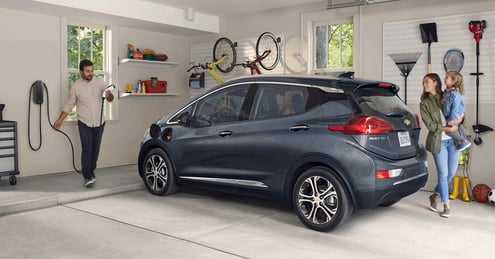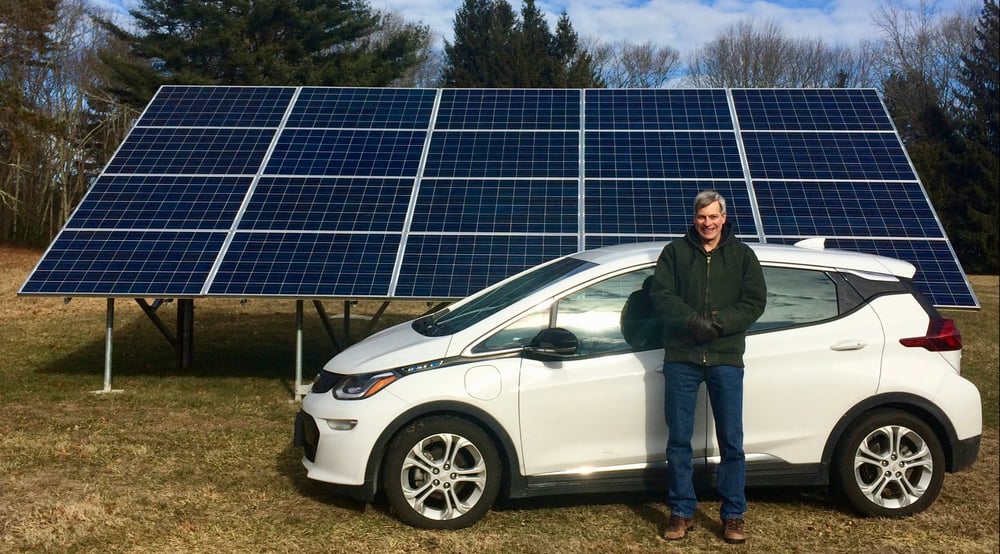Take Action at the MA DPU for EV Charging Programs
Way back at the beginning of 2023, we reportedon the approval by the Massachusetts Department of Public Utilities...
If you drive an electric car, it matters when you plug in and charge – both in terms of the emissions caused by the generation of each kilowatt-hour (kWh) of electricity you consume and in terms of the costs you are imposing on the system as a whole. There are lots of tools at our utilities’ disposal to encourage electric vehicle (EV) owners to charge when both emissions and costs are low, but unfortunately, in Massachusetts, our utilities are behind. Now, we have an opportunity to advocate for a smart charging policy, called a “time-of-use rate,” before the Department of Public Utilities (DPU) at a virtual public hearing at 2:00 pm on Wednesday, December 13. Here’s how to take action.
For those of you ready to get right to it, follow these steps to contact the DPU. Want more background? Keep scrolling.
Speak at the December 13 public hearing.
Send in written comments.
To send in written comments, you can use the same template as above. Some important details:
Right now, if you charge your EV (or turn on your microwave or any other electrical appliance), you pay a flat fee per kWh, regardless of the time of day. (The exception here is if you are enrolled in National Grid’s off-peak charging program or a similar program with a municipal light plant with your EV; more on that later.) However, the actual cost of generating and distributing that electricity varies throughout the day. When demand is high (say, around 5 pm on a weekday), costs are high; when demand is low (say, at 2 am), costs are low. Also, when demand is high, we turn on more (and often, dirtier) fossil fuel power plants, so peak kWhs tend to be more polluting than off-peak kWhs.
 It would be better for everyone if we could shift EV charging load from peak demand times (basically, afternoons and early evenings) to off-peak times (overnight). One of the most effective ways to do this is to set a price signal; in other words, financially incentivize drivers to charge during off-peak times instead of on-peak times.
It would be better for everyone if we could shift EV charging load from peak demand times (basically, afternoons and early evenings) to off-peak times (overnight). One of the most effective ways to do this is to set a price signal; in other words, financially incentivize drivers to charge during off-peak times instead of on-peak times.
This approach is broadly called “smart charging” or “managed charging,” and there are lots of different ways to do it. Some programs focus on daily peaks while others focus on system peaks (you can learn more about the difference between those by watching the first section of this webinar). One approach to managing daily peaks is to set a lower per-kWh price for EV drivers during off-peak times compared to on-peak times. This kind of price structure can be called a time-varying rate, an off-peak charging rebate, and/or a time-of-use rate (TOU).
| One Important Detail: Time-of-use rates require infrastructure that can count kWh with a very, very small margin of error (this is called being “revenue-grade”) and therefore require advanced meters to implement. Off-peak charging rebates have more wiggle room and can, therefore, be implemented with technology, such as vehicle telematics or smart EV charging stations, that is not revenue-grade. To regulators like the DPU, there is a big difference between rates and rebates. |

Last year’s climate law required National Grid and Eversource to propose a TOU for EVs specifically within one year of the law’s passing. Both utilities did so back in August. There are a lot of nitty-gritty details in these proposals, but broadly speaking, they both propose TOU to be rolled out one year after the roll-out of advanced metering infrastructure, which is needed to collect usage data that includes the time of charging. This means that the earliest a TOU could be in place is 2027 or 2028. There are a lot of similarities between their proposals, but some key differences are how the utilities propose to calculate the TOU and what times they consider on- vs off-peak. (If you’d like to dive into the details, you can access Eversource’s filing here and National Grid’s here.)
Recently, the DPU announced how they’re going to handle these proposals, called “dockets” in DPU lingo. (The docket numbers are DPU 23-84 and 23-85, for reference.) The first step the DPU is taking is to (a) hold a public hearing on Tuesday, December 13, at 2 pm and (b) accept written public comment until 5 pm on the same day. Green Energy Consumers will be speaking at the hearing and sending in comments – join us!
We are big fans of TOU rates and have been advocating for stronger price signals to encourage off-peak charging for quite some time. Back in 2019, when National Grid first piloted its off-peak charging rebate, we wrote about how the price signal wasn’t strong enough and didn‘t take all of the benefits of off-peak charging into account. In the big EV infrastructure dockets considered by the DPU in 2021 and 2022, we argued again that National Grid’s off-peak charging rebate wasn’t strong enough and that Eversource should offer an off-peak charging rebate. This legislative session, we’re pushing a bill that would direct the utilities to offer comprehensive off-peak charging rebates now until advanced meters make TOU rates possible, and we’ve brought the issue up several times with the Electric Vehicle Infrastructure Coordinating Council (EVICC). At the DPU hearing on December 13, we will make the following two points.
(1) TOU rates and similar financial incentives to shift EV load off-peak are a critical piece of our state’s climate strategy.
They will simultaneously (a) incentivize more people who currently drive gas-powered cars to switch to EVs by offering even lower fuel costs, (b) reduce disproportionately polluting peaks, and (c) lower the costs of maintaining the grid for all electric customers. (More on that last point in this blog, if you’re interested).
(2) TOU rates must account for all of the benefits of shifting load off-peak.
The price you pay per kWh on your electric bill is made up of lots of different charges. There is a charge for the generation of the electricity (paying the gas plant, wind turbine owner, etc.), a charge for the transmission of the electricity (bringing it across large distances from the generator to a substation near you), and the distribution of the electricity (bringing it from the substation to your home). When you shift load to off-peak times, you reduce costs for all of these categories – the cost of the electricity itself is lower at off-peak times and by shifting demand off-peak, you are avoiding additional transmission and distribution upgrades and costs. If you want to get really technical (and we do!), there are also benefits from avoided capacity needs, improved grid reliability, and reduced greenhouse gas emissions. All of these benefits are calculable (in fact, the Applied Economics Clinic did the math for us in 2022) and further bring down the per-kWh cost of electricity in off-peak times. Those lower costs should be reflected in what drivers pay. (This is a key point: a TOU incentive is not a subsidy, but just an accurate valuation of the costs of providing service.)
National Grid and Eversource, however, did not include all of these benefits (avoided costs) in their TOU calculations. Both utilities included values for generation, but National Grid added distribution (but not transmission) while Eversource added transmission (but not distribution). We’ll be commenting that TOU rates should include values for avoided transmission costs and distribution costs: avoided energy and capacity costs, improved grid reliability, and avoided greenhouse gas emissions.
The avoided transmission and distribution costs here are particularly important. Our electric utilities don’t make money off of the number of kWhs they sell in Massachusetts. Instead, the DPU grants them a certain rate of return on the value of the infrastructure they build and maintain. So, utilities have a financial incentive to keep building out lots of transmission and distribution... which explains their motivation for excluding the value of avoided transmission and distribution in their calculations. Ultimately, the deciders are the commissioners of the DPU appointed by Governor Maura Healey.
There are two ways to take action. You can do one – or both!
Speak at the December 13 public hearing.
Send in written comments.
To send in written comments, you can use the same template as above. Some important details:
Have any questions? Reach out to Anna at anna@greenenergyconsumers.org.
Way back at the beginning of 2023, we reportedon the approval by the Massachusetts Department of Public Utilities...
Way back in the summer of 2021, the electric utilities in Massachusetts – Eversource, National Grid, and Unitil –...
Comments